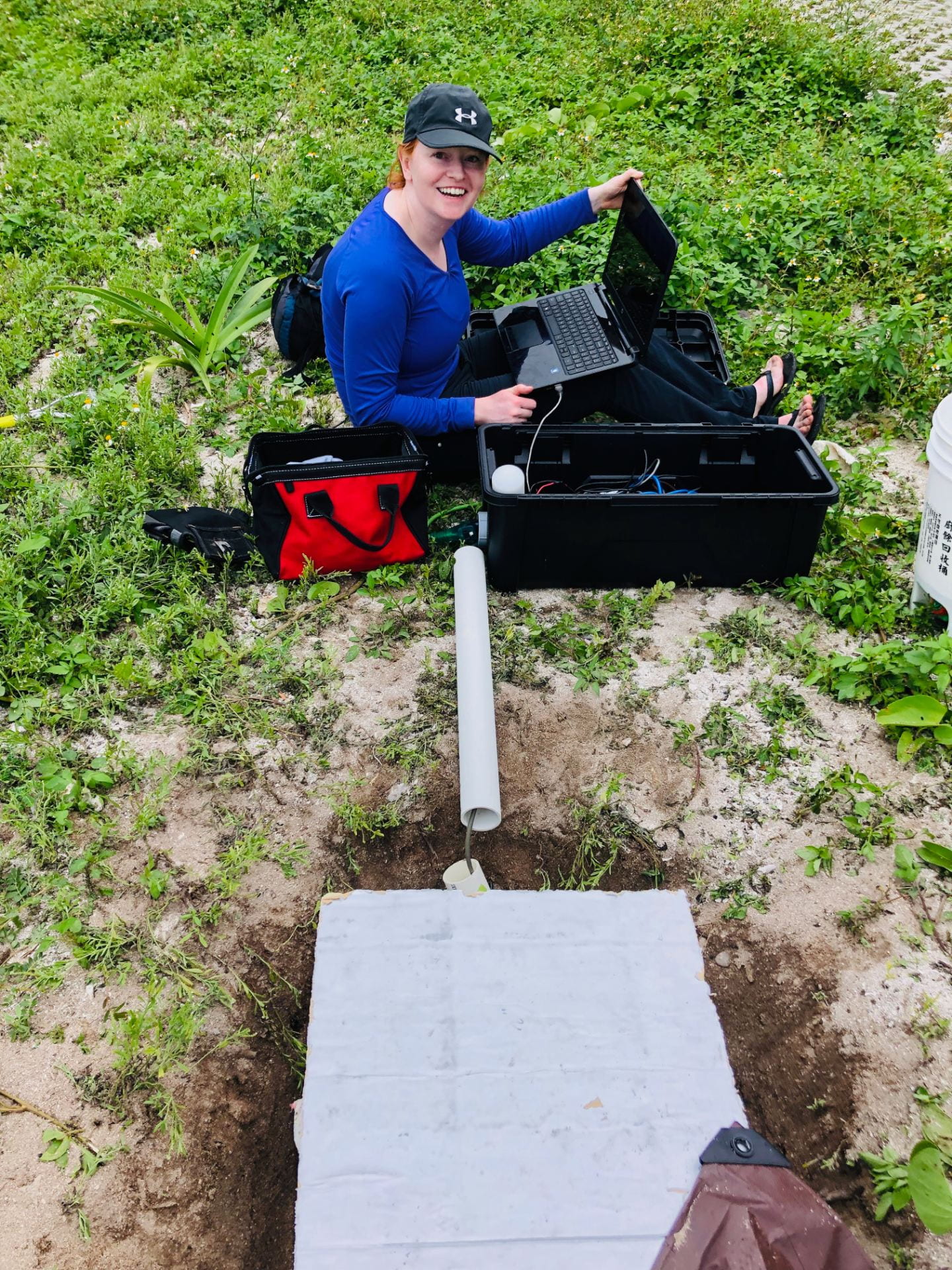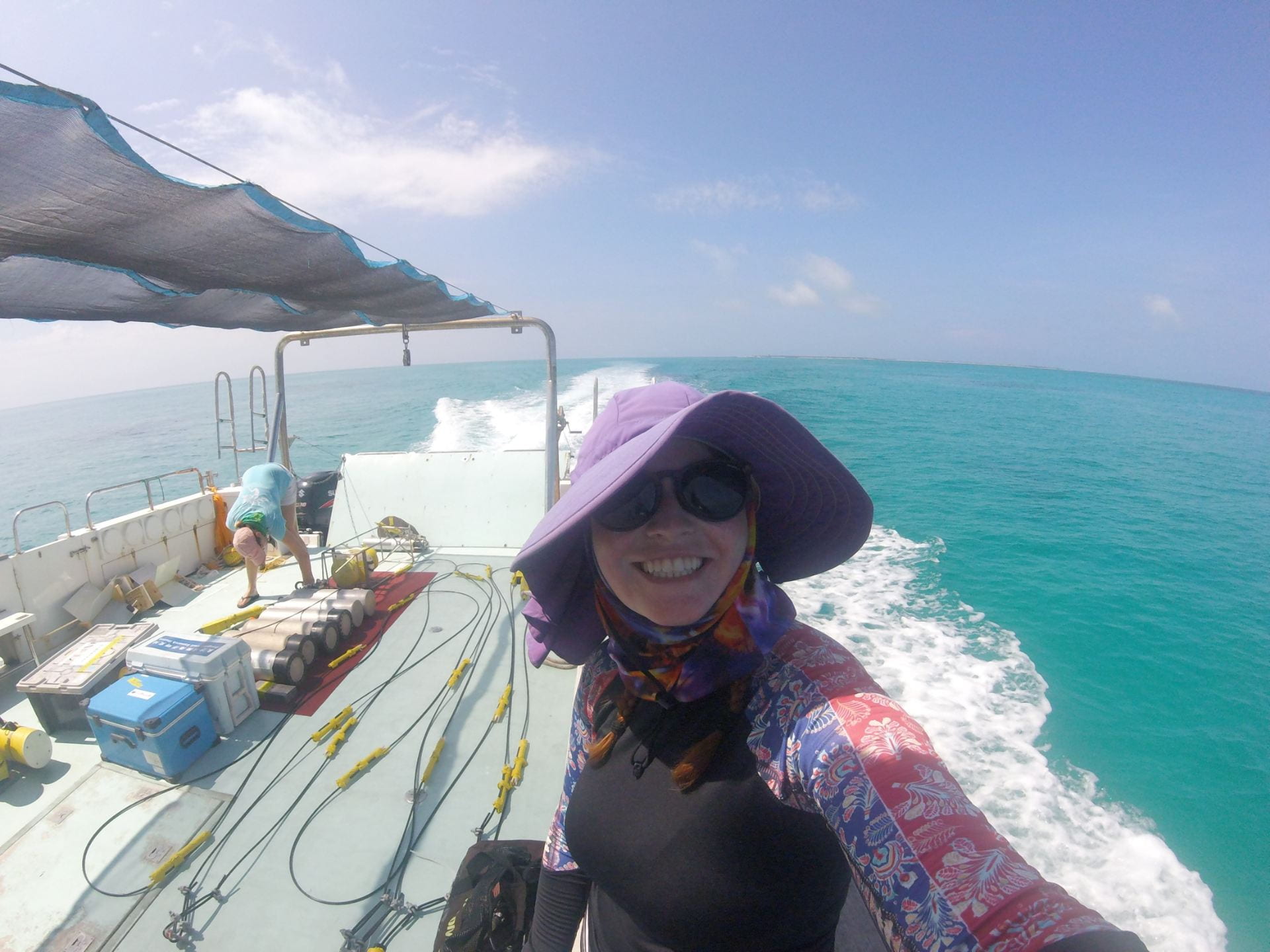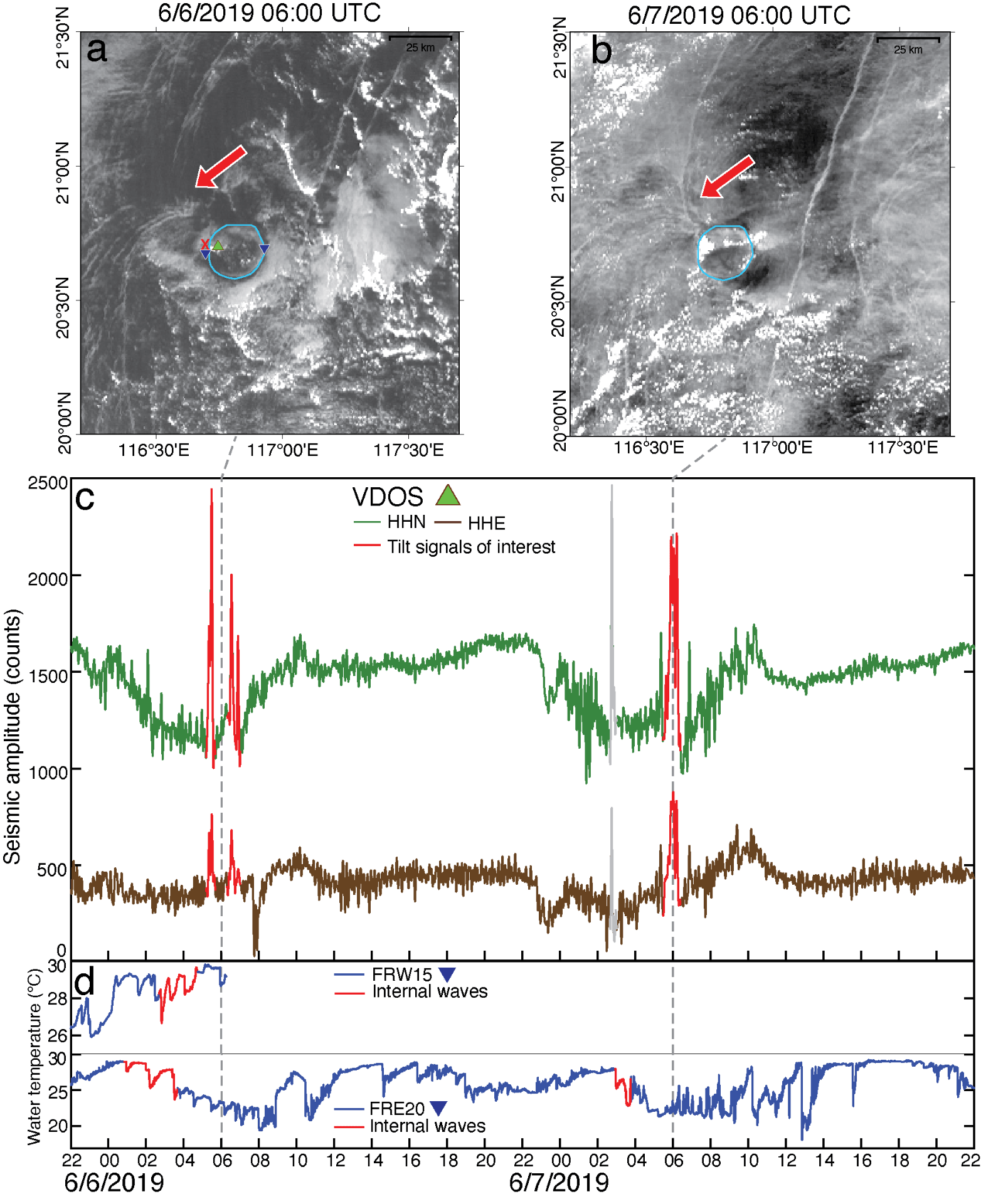Seismic Detection of Internal Waves
Oceanic internal gravity waves are similar to the more familiar surface gravity waves that propagate along the air-water density boundary at the surface of the ocean but instead propagate along density boundaries within the water column. Internal waves are important for coastal processes, climate feedbacks, and general oceanic dynamics and are therefore important to detect and track on a global scale over time. However, since internal waves are buried within the water column and produce only minor amplitude deflection of the sea surface, they are difficult to detect.
Detection of internal waves through sea surface roughness variations visible on satellite images is possible (see red arrows on the satellite image below) but limited by cloud cover and temporal resolution. Short-term field deployments with in-situ oceanographic measurements are often used to successfully detect internal waves. However, since these deployments only measure at certain depths they can miss some waves. More importantly, they do not provide basin-scale spatial coverage or long time series records. The need for global detection and long time series of internal waves motivates a search for geophysical detection methods.

The pressure coupling of a propagating internal wave with the seafloor provides a potential mechanism to generate seismically observable signals. In particular, an internal wave will deform the underlying seafloor and generate a local tilt signal that should be observable on coastal broadband seismometers.
We are therefore performing an initial evaluation of the seismic detectability of internal waves at the Dongsha Atoll in the South China Sea, where the largest amplitude internal waves in the world are generated.

We primarily use a permanent broadband seismometer onshore of Pratas Island (west side of Dongsha Atoll) to find a seismic signal of internal waves passing Dongsha Atoll. In May/June 2019 I deployed additional temporary seismometers on Pratas Island and assisted with the deployment of oceanographic temperature moorings around the atoll. We are comparing the seismic data to the oceanographic temperature moorings as well as satellite data during daylight hours on clear days.

We have found correlations between the timing of transient seismic tilt signals and internal waves identified in oceanic and satellite data. This is promising evidence of the first onshore seismic detection of internal waves! Check out the preprint of our article here.

Check out this movie of our results!
Beyond Initial Detection
A key step following the detection of internal waves using onshore seismometers is the detection using ocean-bottom seismometers (OBS). The use of OBS can expand the global detection of internal waves. Further, a large source of noise on OBS and absolute pressure gauges are oceanographic currents, including internal waves. If this signal can be quantified, ocean bottom instruments can be better corrected for seismologists. We are currently analyzing one year of data from an OBS deployed on the east side of Dongsha.